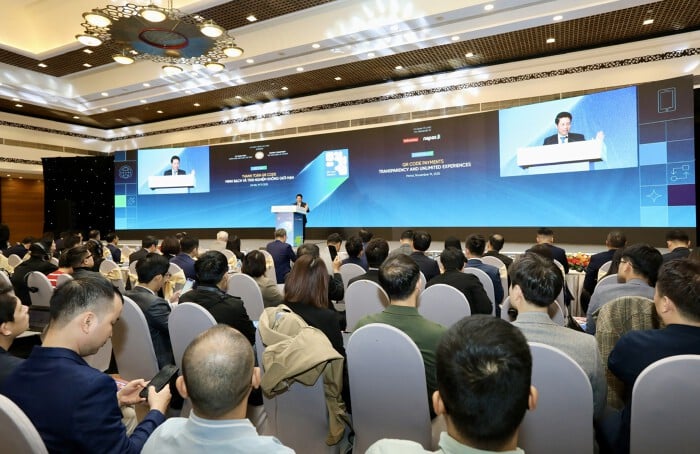
At the workshop "QR Code Payment: Transparency and Unlimited Experience" organized by VnEconomy in collaboration with the Payment Department, Vietnam National Payment Corporation (NAPAS), and related units, Mr. Pham Tien Dung, Deputy Governor of the State Bank of Vietnam, said that the success of QR Code in Vietnam is the resonance of 3 main factors: The consistent policy of the Government and the State Bank on cashless payment; the birth of the QR standard has broken interbank barriers; the strong acceptance of the market, from banks to millions of small traders and consumers.
QR transactions lead the way in electronic payments

In the first 9 months of 2025, cashless payment transactions increased by 43.32% in quantity and 24.23% in value over the same period. Notably, transactions via QR codes skyrocketed by 61.63% in quantity and 150.67% in value, becoming the leading method among electronic payment types.
As of the end of September 2025, the NAPAS system alone has processed more than 8.3 billion transactions with a total value of VND 47.53 trillion. Even on peak days, the system reaches a capacity of more than 42.5 million transactions/day with an availability of up to 99.997%.
Thanks to simple operations, fast processing speed, high security as well as the readiness of the credit institution system, QR Code has become a payment method chosen by many consumers and businesses.
According to the State Bank of Vietnam, many units currently have the habit of using personal QR codes to receive payments for goods and services. Although this form is convenient, fast, free of charge and does not require signing a contract with a payment service provider, it has a series of risks such as: Inability to accurately record transactions for management purposes; consumers are not protected in case of complaints and cannot connect to the bilateral payment system using QR codes with other countries.
Citing an example, a financial expert stated: Company A signed a contract with company B but when making payment, they used the QR Code (money transfer) of their personal account. These habits have existed for decades, so although they have developed rapidly and widely, this form of payment does not truly reflect the nature of commercial payments. This is a loophole for tax evasion, money laundering and fraud...
Does not reflect the commercial nature of payments
According to experts, QR Code transactions are essentially just money transfers from one account to another, not tied to specific goods or services. This is a legal civil transaction but does not reflect the nature of commercial payments.
Many common buying and selling situations such as: Cancellation, return, partial refund or transaction reconciliation cannot be handled properly if only relying on money transfer. For example, when a transaction needs to be canceled, both parties must scan the QR Code and make a reverse money transfer; if a partial refund is made, the seller must transfer a separate amount for the refunded portion. This causes difficulties for both the buyer and the seller, especially when a dispute occurs. The system also does not recognize refunds, thus not supporting transaction reconciliation.
One of the painful consequences of using QR Codes to transfer money is that personal and organizational money flows are mixed, making monitoring and tracing difficult.
In particular, when the Tax Department implemented the roadmap to eliminate lump-sum tax for business households from January 1, 2026 and applied the regulation of issuing invoices generated from cash registers, many households proactively circumvented the law by asking customers to transfer money to many personal payment accounts; without recording the transaction content. Or in fact, many businesses also use personal payment accounts to receive payment for goods and services.
With the goal of expanding international connections, preventing money laundering and controlling budget revenue, experts say that Vietnam needs to accelerate the upgrade roadmap from QR money transfer to QR payment (QR Pay), in accordance with international practices and modern management requirements.

Within the framework of the workshop "QR Code Payment: Transparency and Unlimited Experience" on the afternoon of November 19, representatives of ministries, branches and experts all agreed that switching to QR code payment will bring 3 key benefits.
For consumers, this form helps transactions become more transparent, easy to track and ensures high security standards. For businesses, the application of QR payment supports effective sales management; at the same time, it provides data for consumer behavior analysis. For the Management Agency, this payment system helps control cash flow better, improve tax collection efficiency and market policy planning, thereby promoting domestic consumption.
To develop a network of payment acceptance units using QR Pay, service providers and payment intermediaries need to have a strong enough solution to encourage acceptance points to convert, while allocating resources to expand infrastructure. In addition, when the conversion from QR Code to QR Pay is implemented, many areas will be involved and benefit: from developing the domestic market (Ministry of Industry and Trade), transparency of sales to serve the calculation of taxable income (Department of Taxation - Ministry of Finance ), to fintechs providing additional services.
According to Mr. Pham Anh Tuan, the Management Agency has oriented some solutions, which are: Payment service providers/payment intermediaries need to focus on expanding the network of payment acceptance units (PPUs) to meet the increasing needs of people and businesses. There are measures to encourage PPUs to use QR Code for payment instead of QR Code for money transfer.
“Enhance payment interconnection cooperation between different QR Code providers to bring payment convenience to customers; aim to deploy connections with other countries such as China, Korea, Singapore, India, Taiwan (China), Malaysia...; strengthen communication so that customers know about the service, strengthen staff training at the IT service providers to ensure that customers can identify and properly use bilateral retail payment services via QR Code”, said Mr. Pham Anh Tuan.
Source: https://baotintuc.vn/kinh-te/day-nhanh-lo-trinh-nang-hang-qr-chuyen-tien-len-qr-thanh-toan-20251119175915755.htm





![[Photo] 17th Congress of Hanoi Women's Delegates](/_next/image?url=https%3A%2F%2Fvphoto.vietnam.vn%2Fthumb%2F1200x675%2Fvietnam%2Fresource%2FIMAGE%2F2025%2F11%2F21%2F1763711953024_image-9-4623-jpg.webp&w=3840&q=75)

![[Photo] Lam Dong: Panoramic view of Lien Khuong waterfall rolling like never before](/_next/image?url=https%3A%2F%2Fvphoto.vietnam.vn%2Fthumb%2F1200x675%2Fvietnam%2Fresource%2FIMAGE%2F2025%2F11%2F20%2F1763633331783_lk7-jpg.webp&w=3840&q=75)
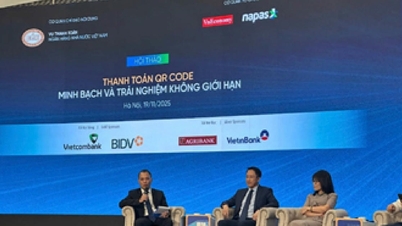

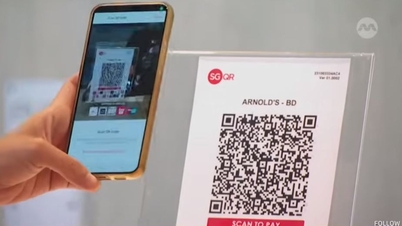













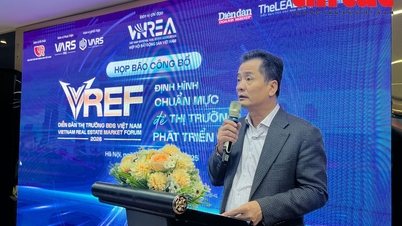








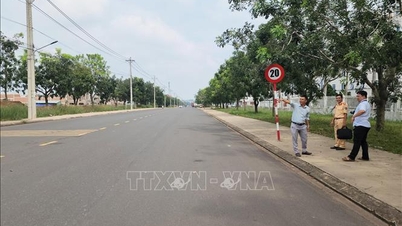



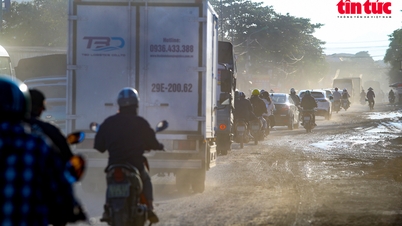








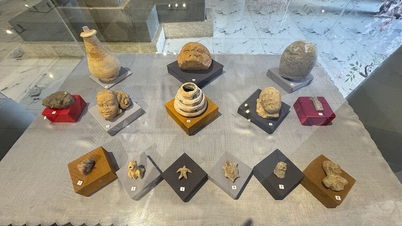












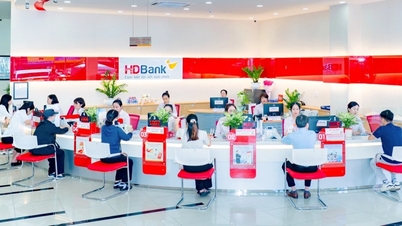




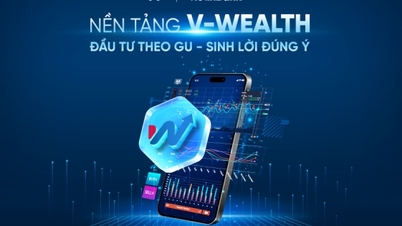








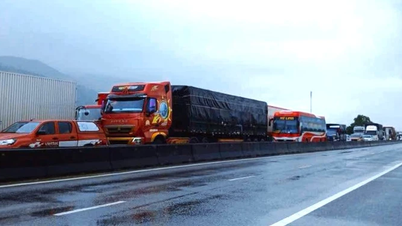






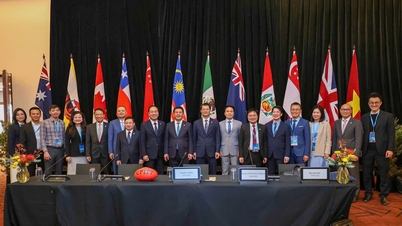
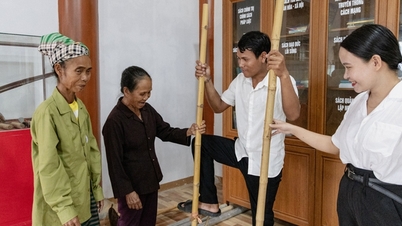


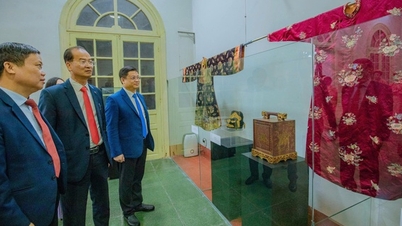
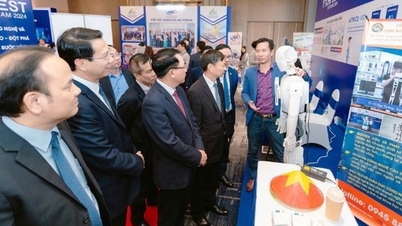



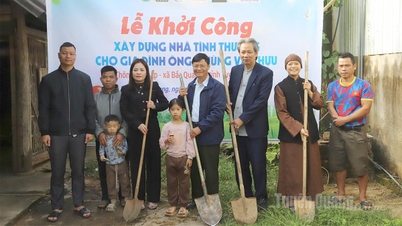

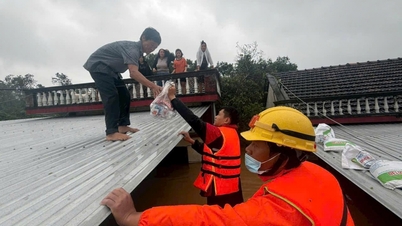




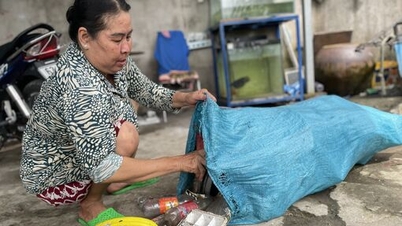

















Comment (0)